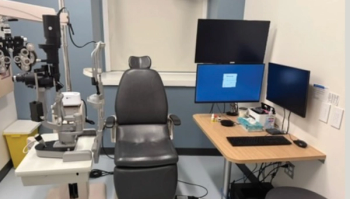
Investigating the effects of canaloplasty on corneal epithelium
Dr David Lubeck talks with Caroline Richards of Ophthalmology Times Europe about his ESCRS presentations, touching on surgical effects on corneal epithelium and the iTrack Global Registry for glaucoma.
Video transcript
Note: This transcript has been lightly edited for clarity.
Caroline Richards: Thank you for joining me today, Dr Lubeck, to discuss your presentation on endothelial cells, which I understand you just gave, in fact. It's lovely to meet you here in sunny Milan. I'm Caroline, editor of Ophthalmology Times Europe. Could you please tell me more about your presentation and what the key takeaway points were?
Dr David Lubeck: Caroline, we and surgeons who have done MIGs surgery have been drawn more and more to the possible consequences of damaging corneal epithelium as we do our procedures. There's much still to be learned about how these procedures affect the epithelium over the long term.
Richards: Right.
Lubeck: Canaloplasty, which is procedure I've been doing for about seven years, there was little to no data on its effect on the endothelial. Two years ago, Robert Noecker and I began a prospective study to determine the effects of canaloplasty on the cornea...
Richards: Right.
Lubeck: ...over a 1-2 year period.
Richards: What did you find from that?
Lubeck: We found very, very strongly that canaloplasty has no negative impact on the corneal epithelium compared to cataract surgery alone. So essentially, it has minimal impact to no impact on the health of the cornea.
Richards: Where do you see this research going in the future?
Lubeck: We hope to extend the current study up to 5 years, but we've also embarked on a much bigger data registry project called the iTrack Glaucoma [Global] Data Registry. It's being housed in the ISGR, the National Glaucoma Surgery Registry. And we hope to enrol up to 1,000 patients in that over a fairly short period of time, and then have a much more comprehensive look at knowing the efficacy, safety profiles and the nuanced elements of the procedure.
Richards: It sounds like it will be really valuable data when that comes through.
Lubeck: It's essential. We don't have for this procedure. We don't have a single, large database, and it's been around for a long time.
Richards: Well is anything else you would like to add, anything you're really excited about at present? Or have we covered everything?
Lubeck: The procedure is attractive in the beginning because it's non-destructive, there's no stents left behind. And from a Bayesian standpoint, or reasoning, it makes sense in terms of what it does for glaucoma, and the treatment. It has tremendous implications for the future.
Once we understand not only the biomechanics, but the bio-physiology of glaucoma, I believe that this technology is going to have a future application to different modalities of treatment.
Richards: Oh really? Oh, that sounds excellent. Well, thank you very much for your insights today, Dr Lubeck.
Lubeck: It's a pleasure. Thank you very much, Caroline.
Richards: Thank you.
Newsletter
Get the essential updates shaping the future of pharma manufacturing and compliance—subscribe today to Pharmaceutical Technology and never miss a breakthrough.












































